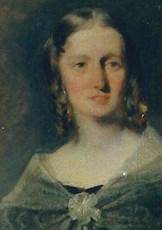Rotary Web Press
Until the mid-1870s, Hoe had built on the 1847 model, making 175 modifications en route. He produced a single perfecting press in 1862, acquired by Lloyd in May 1864. Work had begun on this in 1850, along with work on printing a continuous reel of paper. Neither yielded a quick solution The complex 1859 patent was never put into use, and even a much simpler version patented in 1869 was unsatisfactory.
A patent filed in 1871 describes the perfecting process, the somewhat complex passage of the paper through the press and the method of fixing the stereotype plates. It was improved in 1872 (Patent No 131,217).
With this machine, Hoe incorporated a rotary perfecting press fed from a continuous reel. The problem of cutting the reel into sheets immediately after printing was solved by merely perforating it and then severing it by means of tapes.
Capable of printing 18,000 sheets, the average output was 12,000 8-page sheets in an hour. Lloyd bought the two-feeder perfecting press in 1874, made in London. An experimental delivery system was added. This proved to be highly successful and two other London newspapers ordered 14 more of these machines. It was patented in Britain in 1872 and in the US in 1877.
By the mid-1870s, Hoe’s delivery systems had more or less eliminated human intervention in collating and folding. Presses had been extended by placing two or four printing plates side by side on the main cylinder — the double or quadruple perfecting press. The paper was cut on its way out of the press and sheets were directed by the machine for collation as complete papers.
 |
| The Hoe Web Perfecting Press |
All processes were automated in Hoe’s “double-supplement press” from 1882. In 1887, Lloyd installed eight of these, each producing two copies at a rate of 24,000 an hour. In 1892, Lloyd’s Weekly had 20 pages and Daily Chronicle, 10 pages — by then, the Hoe machines could insert and gum a single page.
In 1906, Lloyd’s papers were printed on seven double octuple perfecting presses, first devised in 1895. They were driven by electric power, four decks high and each equivalent to 16 single machines in combination. They could print 144,000 papers of up to 16 pages or 72,000 papers of up to 32 pages in an hour.
A correspondent of the Cairns Post visited the Lloyd establishment in 1909. The machine room was “far underground” and pneumatic tubes were used to convey copy and other paper among the various departments. The composing room (linotype) and the foundry seem to have been above ground.
Each of the seven machines printing a 32-page newspaper used 128 stereotype plates weighing more than three tons, half a ton of ink and 18 men to mind them. Together they used enough paper to “make a pathway from London to St. Petersburg, and still leave enough over to reach from this office to Matlock”.
Since 2008, News International’s Waltham Cross plant — the largest printing centre in the world — has capacity to print one million 120-page tabloid size newspapers in full colour in an hour. Internet was hailed as the new Gutenberg, but some of us feel that it has yet to prove itself technically superior to print on paper.
Footnotes
- 1 Tucker, Stephen D., “History of R. Hoe & Company, 1834—1885”’, ed. by Rollo G. Silver, Proceedings of the American Antiquarian Society, 82.2 (1973) pp351–453


